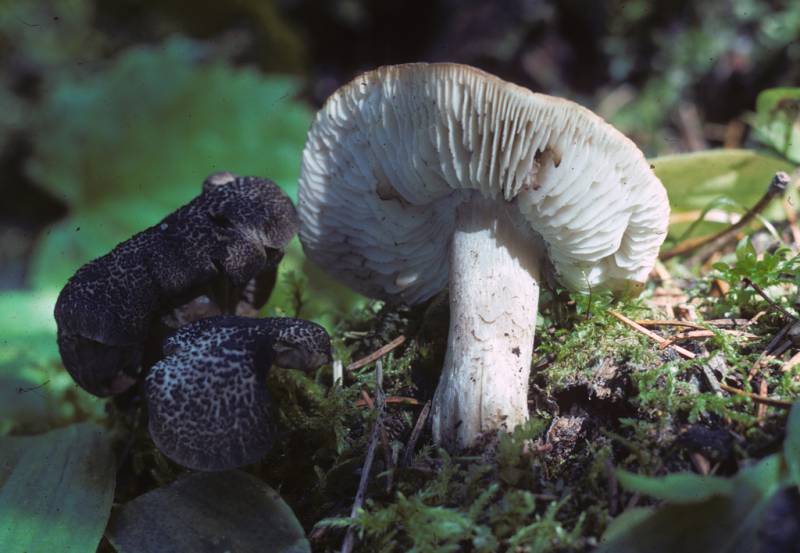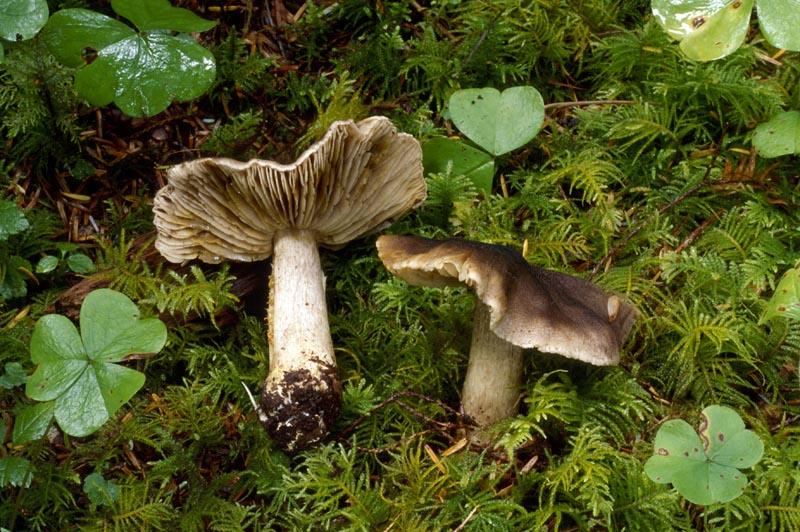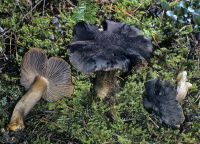Distribution: Pacific Coast Pacific Coast
Habitat: Conifer forests
Conservation Status: Not of concern
Cap: 4-10 cm wide, broadly convex when young, nearly plane at maturity; surface dry, densely covered by small blackish violet to violaceous gray-brown fibrillose scales; nearly black over the disc, grayish violet-brown to violet-gray toward the margin, fading to grayish brown overall; margin incurved at first, becoming uplifted and wavy, often split radially. Flesh: thin; whitish and unchanging or whitish at first, then rapidly staining reddish gray and finally sordid grayish brown when cut; odor and taste slightly to distinctly farinaceous. Gills: sinuate, moderately broad, close, thick, sometimes anastomosing; very pale gray when young, becoming pinkish gray to sordid brownish gray or cinnamon at maturity; edges sometimes discoloring fuscous or blackish. Stalk: 5-14 cm long, 1.5-4 cm thick, nearly equal or enlarged downward, sometimes abrupt or tapered at the base, solid, tough; surface dry, appressed-fibrillose when some fibrils projecting, apex pruinose; whitish to pale violet-gray or brownish, discoloring yellowish tan towards the base or where handled.
Sources: Bessette, Alan E., Arleen R. Bessette, William C. Roody, and Steven A. Trudell. Trichoolomas of North America. Austin, University of Texan Press, 2013. Trudell, Steve and Joe Ammirati. Mushrooms of the Pacific Northwest. Portland, Timber Press, Inc. 2009.
PNW Herbaria: Specimen records of Tricholoma atroviolaceum in the Consortium of Pacific Northwest Herbaria database
CalPhotos: Tricholoma atroviolaceum photos






